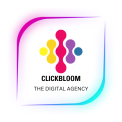Meta Title: Email Marketing in 2025: Benefits, Strategies & Best Practices
Meta Description: Discover how email marketing can grow your business in 2025. Learn key strategies, benefits, and tools to build a high-converting email campaign.
Introduction
In a world flooded with social media updates, video reels, and push notifications, email marketing remains one of the most effective and personal ways to reach your audience. With over 4.5 billion daily email users, email continues to be a direct, reliable, and cost-effective marketing channel.
Whether you’re a startup, freelancer, or enterprise, email marketing helps build relationships, boost sales, and drive repeat business.
Let’s dive into what makes email marketing powerful and how you can leverage it for success in 2025 and beyond.
What is Email Marketing?
Email marketing is the strategic use of email to promote your products, services, or brand. It involves sending targeted, personalized messages to your subscribers or customers with the goal of driving engagement, conversions, and brand loyalty.
It’s not just about sending newsletters—it’s about sending the right message to the right person at the right time.
Why is Email Marketing Important in 2025?
1. High ROI
Email marketing consistently delivers one of the highest returns on investment (ROI) of all marketing channels.
On average, for every $1 spent on email marketing, businesses get back $36.
2. Direct & Personalized Communication
Email lets you speak directly to your customer’s inbox, unlike social posts that may get lost in the feed. You can segment your list and personalize content based on behavior, preferences, and location.
3. Builds Long-Term Relationships
Email campaigns help nurture leads and stay top-of-mind. Regular communication builds trust, which eventually converts prospects into loyal customers.
4. Highly Measurable
You can track open rates, click-through rates, conversion rates, bounce rates, and more. These insights help refine your strategy.
5. Automated Yet Human
Email automation tools allow you to send timely messages at scale, but with the personalization that feels human and relevant.
Key Components of a Successful Email Marketing Strategy
1. A Clean, Segmented Email List
Quality beats quantity. Always grow your list organically with opt-in methods (forms, lead magnets, etc.). Segment your list based on:
- Demographics
- Purchase history
- Engagement level
- Interests
2. Compelling Subject Line
Your subject line is your first impression. Make it clear, catchy, and curiosity-driven.
Tip: Use power words like “Exclusive,” “Free,” “Limited Time,” or “You Don’t Want to Miss This.”
3. Personalized Content
Include the recipient’s name and personalize the message based on their actions, such as browsing history or past purchases.
4. Clear Call-to-Action (CTA)
What should the reader do next? Buy now? Download a guide? Book a call? Use buttons and links to guide them.
5. Responsive Design
Most emails are opened on mobile devices. Make sure your design is mobile-friendly with short paragraphs, readable fonts, and tappable CTAs.
Types of Email Campaigns You Can Run
- Welcome Series – Make a great first impression
- Promotional Emails – Sales, discounts, new launches
- Newsletter – Industry news, blogs, updates
- Cart Abandonment Emails – Win back potential customers
- Re-engagement Campaigns – Bring back inactive subscribers
- Transactional Emails – Order confirmation, shipping updates
- Surveys & Feedback Requests – Gather insights
Best Tools for Email Marketing
- Mailchimp – Great for beginners and small businesses
- ActiveCampaign – Advanced automation & CRM
- MailerLite – Easy design & landing pages
- ConvertKit – Ideal for creators & bloggers
- HubSpot – All-in-one marketing suite
Best Practices to Follow
- Always get permission (opt-in)
- A/B test your subject lines and CTAs
- Avoid spammy words like “FREE!!!”
- Send consistently but not too often
- Analyze your results and optimize
